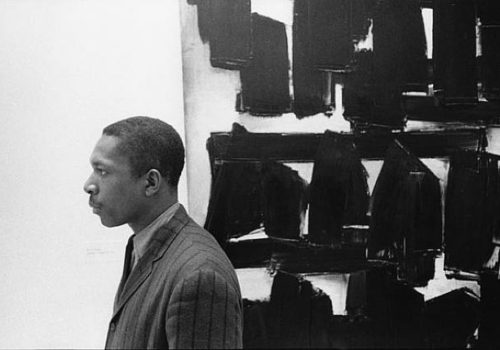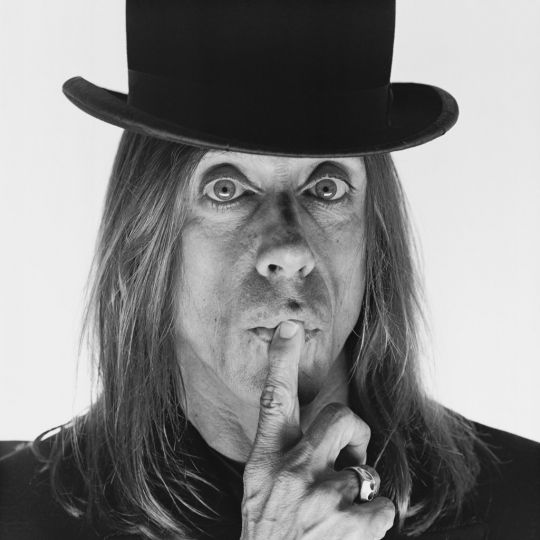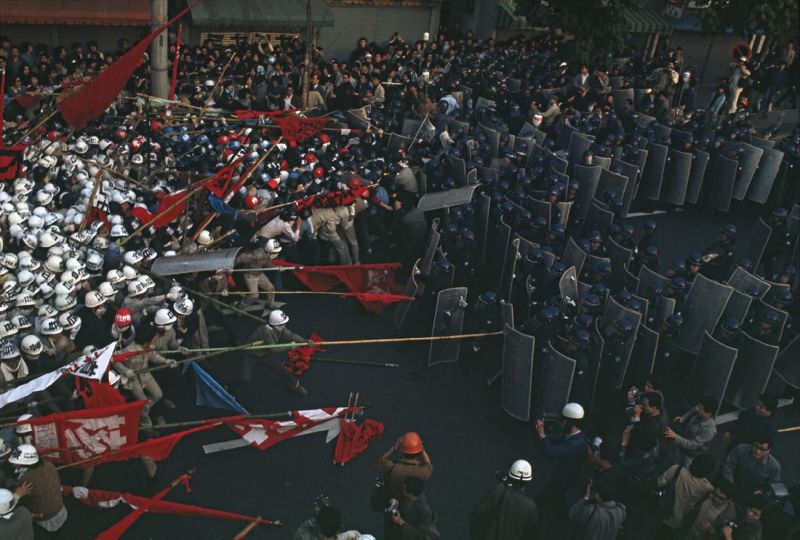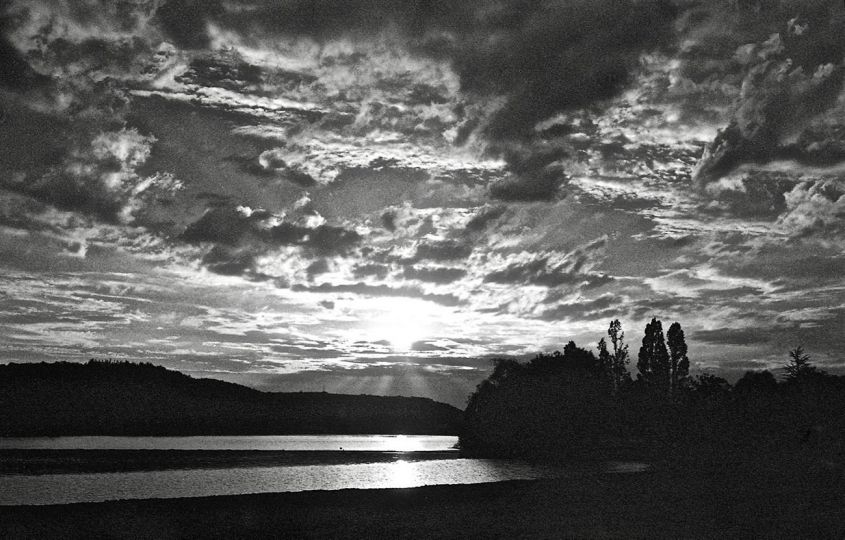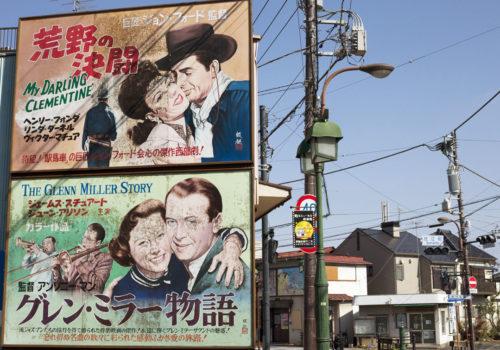All summer long there the feeling of nostalgia seems to permeate our days. Whether we are lucky enough to be lounging at the pool or beach, or walking from sweltering street to airconditioned office or driving on a hot summer night, the memories of past summers are mixing with the freshly made memories of this summer. All this happens to the soundtrack of our lives — the rock and roll songs of our youth, our parents’ youth and the current summer song soon to evoke nostalgia next summer. So, what better way to honor the end of this summer than with a big blast of nostalgia? Two wonderful and very different shows about rock and roll photography are on view in Los Angeles. I would recommend going to the more raucous exhibit at the Annenberg Space for Photography first to get a sense of the history and evolution of rock photography and then move on to the Peter Fetterman Gallery to see a thoughtful, intimate grouping of black and white images with which you can commune, be inspired by and take home very reasonably.
The Annenberg Space for Photography has the traveling show “Who Shot Rock and Roll: A Photographic History, 1955 to the Present?” Part of the whole experience at the Annenberg is accessing the space. One must walk through the Creative Artists Agency building to get to the show. (Think Ari Gold from Entourage). The architecture of this complex is expansive, beautiful, completely oversized, glamorous yet elegant. The buildings house the actual superpowers who create our culture — actors, directors, writers, musicians, star athletes through their entertainment/corporate deal-making. Pick your favorite musician – Bruce Springsteen, Sting, Green Day – they are all in contract there. One cannot help but be awed by that knowledge as one passes on to an exhibit that largely celebrates the growth of the Rock and Roll industry from its naïve and innocent beginnings to the carefully calibrated money machine it is today.
The half hour documentary film commissioned by the Annenberg to accompany the show really makes it more than just a looky-loo experience. Interviews with the show’s photographers explain how not only the medium of rock and roll was really just invented on the fly, but the distinct genre of rock photography was also an improvised and intuitive response to the scene around them. As a quote from Linda (Eastman) McCartney explains “People who later became icons were on the brink of their careers…before self-consciousness set in…” The images of the bands in their early days at picnics, sitting at their kitchen tables are fascinating and the images are really more like playful snapshots by fellow musicians or friends who found their calling as photographers.
We see the products of many hours of “hang time” in the openess between the photographers and the musicians. Music photographers are not just creating publcity images; they are covering the whole rock and roll lifestyle, building trust over time that yields real moments. You can really see that process and the results in this exhibit and in the show at the Peter Fetterman Gallery. There is an image of The Band in Levon’s kitchen from 1968. It looks like a meaningless, random vernacular photo, UNLESS you recognize the young men hanging out. There is no playing to the camera, no physical statements by anyone about being anyone. It’s fascinating.
Make no mistake, this show of 166 images was artfully curated by Gail Buckland for the Brooklyn Museum. There are hidden gems in the show that are like secret messages to those who know art and photography: a portrait of James Brown in curlers by Diane Arbus that is a twin with her “Young man in curlers at home on West 20th Street, N.Y.C.” Iggy Pop appears in the classic St. Sebastian martyr’s pose, and Bow Wow Wow is set up as “Le déjeuner sur l’herbe” by Manet.
Then, as the music and the culture of the sixties gears up, the photographers begin to really become very creative and they work with the musicians to make a creative statement. Musicians suddenly know they are famous and start looking out at their audience through the lens. Even as record companies begin to grow and control the business, the “suits”, afraid of the creative process, leave the art direction to the photographers. As one says “the inmates were running the asylum.”
In the end, though, all that creative energy buckles to the pressure of the financial wizards and imagemakers. As the music moved from the fringe of society to become the center of our culture, the photographers are asked to use their talents to create specific image; to define an act through their visual branding. The band managers and musicians themselves place huge restrictions at all levels on the photographers so it becomes difficult to get great photographs of them making music or portraits that reveal the spirit inside. I find these commercial images less interesting – more entertaining and eye-catching, but not very engaging. Still, there are plenty of crowd pleasers – a fabulous collage of Michael Jackson dancing in front of an eight way mirror and a photomontage of a tiny Madonna before an impossibly big audience at Danceteria in 1983.
Besides the still images there are numerous multimedia bits. Visitors can see a slideshow of 80 images by Henry Diltz taken between 1966-1990 set to a soundtrack. Woven into the exhibit are brief music videos: Sonic Youth’s Death Valley’69 by Judith Barry and Richard Kern, U2’s One and Electrical Storm by Anton Corbijn, Grace Jones’ One Man Show by Jean-Paul Goude, The Vines’ Outtathaway by David LaChapelle and Björk’s Big Time Sensuality by Stéphane Sednaoui and a video of Elvis performing “Heartbreak Hotel” from the TV program, “Stage Show.” Visitors can attend the free lecture series for this exhitibion, too.
You’ll find a number of the same images at both the Annenberg and at the Peter Fetterman gallery, but Peter’s images are the ones you will want to take home. They are simply gorgeous. He has sifted through thousands of images to hone in on a lovely black and white collection that, individually and as a whole, evoke a dialogue between the viewer, imagemaker and the musician (or the idea of the musician). The show, “Forever Young – The Art of Music Photography”, focuses mainly on artists as they were on the cusp of fame and early in their career. There is a photo of Bruce Springsteen by Danny Clinch taken when he was so young, I didn’t really recognize him. He looks lean and hungry, ready to meet and create his fate. There is a fabulous jazz section included, which is a brilliant addition since jazz and blues are integral to rock. There is a portrait of John Coltrane at the Guggenheim by William Claxton. He is standing in front of a Franz Kline that looks a bit like a primitive or alien musical notation. There is the close up of Pete Seegar’s banjo, done up big and with rich beautiful tones. There are a number of platinum images with their velvety surfaces. But if the platinum price tag (surprisingly reaasonable) doesn’t work, you can walk away with the same, smaller version in silver gelatin for a song. (Ha!!)
One of my favorites is a very early shot of Bob Dylan by Schatzberg. The young Bob is wearing those massive Raybans, his curls tightly cropped, shot to give a yin/yang effect of light falling across Bob’s face. He stands against what looks like a wall of butcher paper. There is a dimple in the paper and, somehow, this little flaw in an otherwise smooth and refined portrait just makes this photograph fabulous.
By contrast, on the wall of Annie Liebovitz portraits, there is a huge portrait of Keith Richards. It is a wide shot of the entire set – stool, lights, and backdrop all showing. Keith is sprawled out on the floor, passed out with his pants unzipped and his underwear showing. This is really the only image in either show that honestly addresses the dark side of the music business. I’m sure Keith and Annie had a good laugh about it but for those of us who have to show up for work on time every day, the astonishing level of dissipation is, well, sobering. Further on in the show, is a playful portrait taken five years earlier of Keith standing defiantly in front of a sign that says “Patience Please…A Drug Free America Comes First.”
I was delighted and surprised to a shot of Lou Reed and Laurie Anderson with her hair standing straght up, sitting together on a bench at Coney Island. I was hit with such a blast of nostalgia. In my mind their work is filed under two very different categories, and I realized that, of course, they were colleagues!!I strolled along and communed with the artists that have fed my soul, in happy and sad times. I loved two beautiful rear view mirror shots paired for the show of Joni Mitchell by Graham Nash and Neil Young by Danny Clinch. These artists,along with the Beatles, the Stones, Johnny Cash, Tom Waits, Kurt Cobain, John Coltrane, Etta James, Jimi Hendrix, Bob Marley, and all the rest have permanently carved aural pathways in my mind and my heart; they have given voice to my struggles, my dreams, my joys and triumphs. As I leave the gallery the Jackson Browne lyrics come to mind:
People stay just a little bit longer.
We want to play just a little bit longer.
Now, the promoter don’t mind,
And the union don’t mind,
If we take a little time,
And we leave it all behind,
And sing one more song…
Mélanie Light
“Who Shot Rock and Roll: A Photographic History, 1955 to the Present?”
June 23 – October 7, 2012
Annenberg Space for Photography
2000 Avenue of the Stars
Los Angeles, CA 90067, États-Unis
Phone (213) 403-3000
“Forever Young – The Art of Music Photography”
Peter Fetterman Gallery
June 28 through September 8, 2012
2525 Michigan Avenue
Santa Monica, CA 90404, États-Unis
Phone : (310) 453-6463

